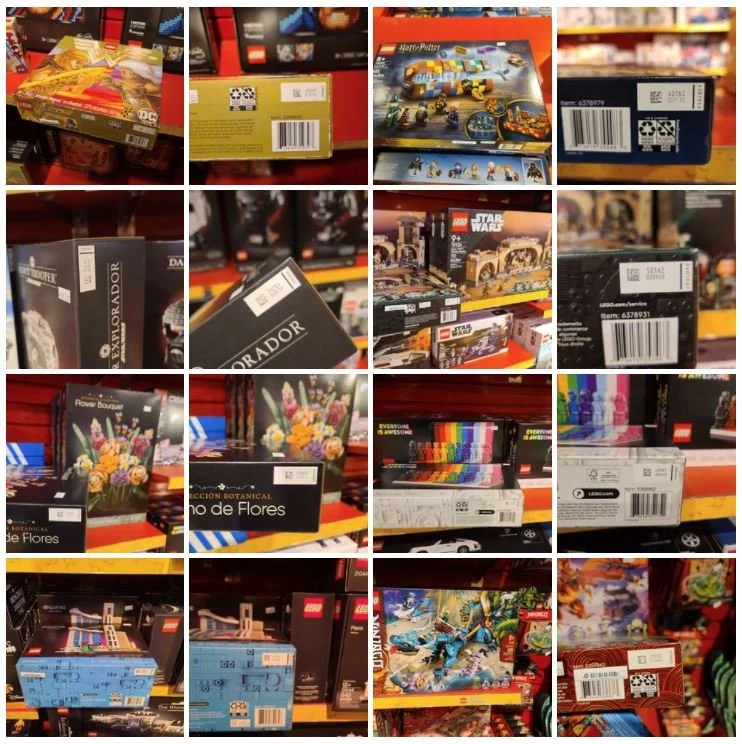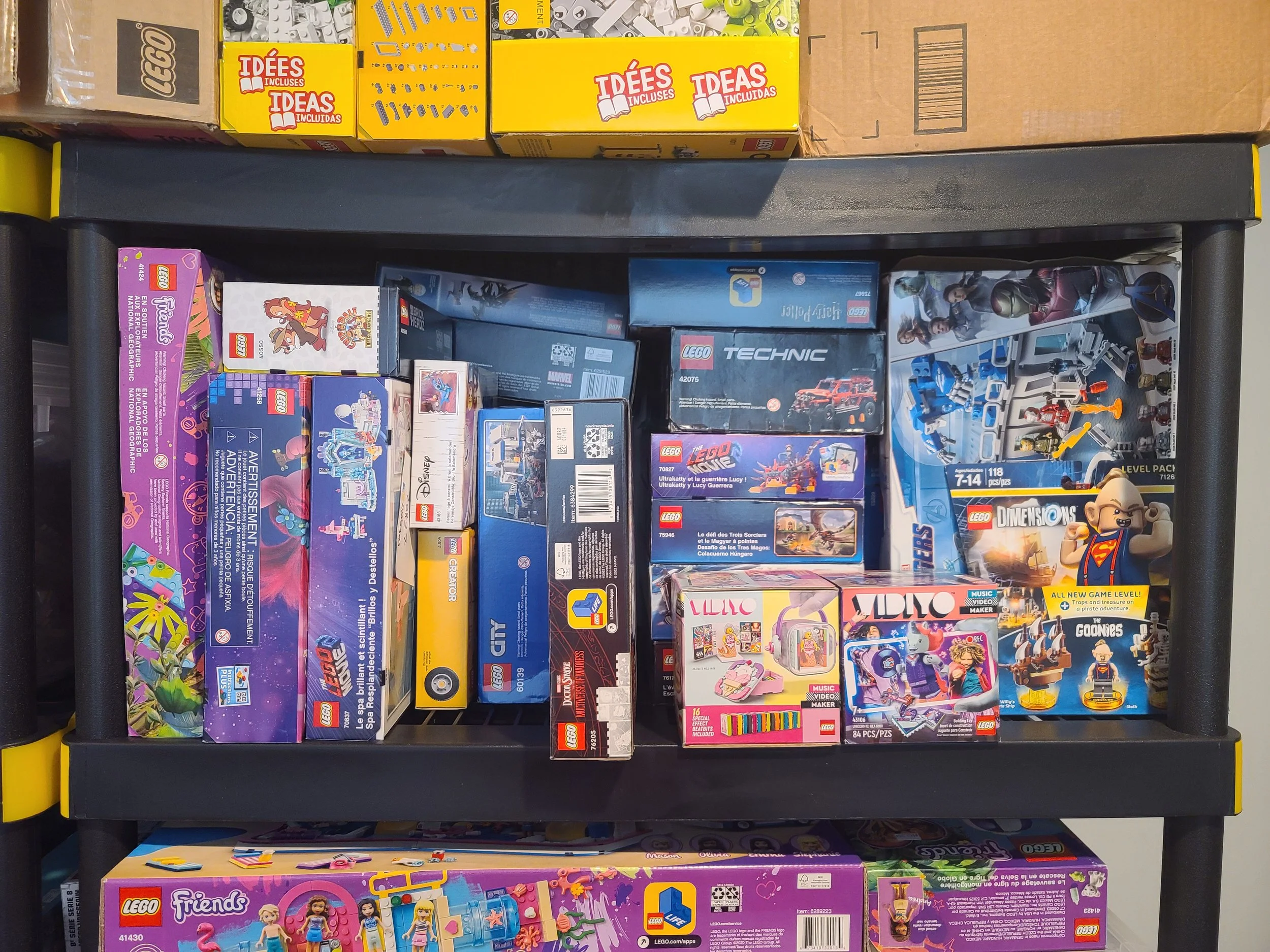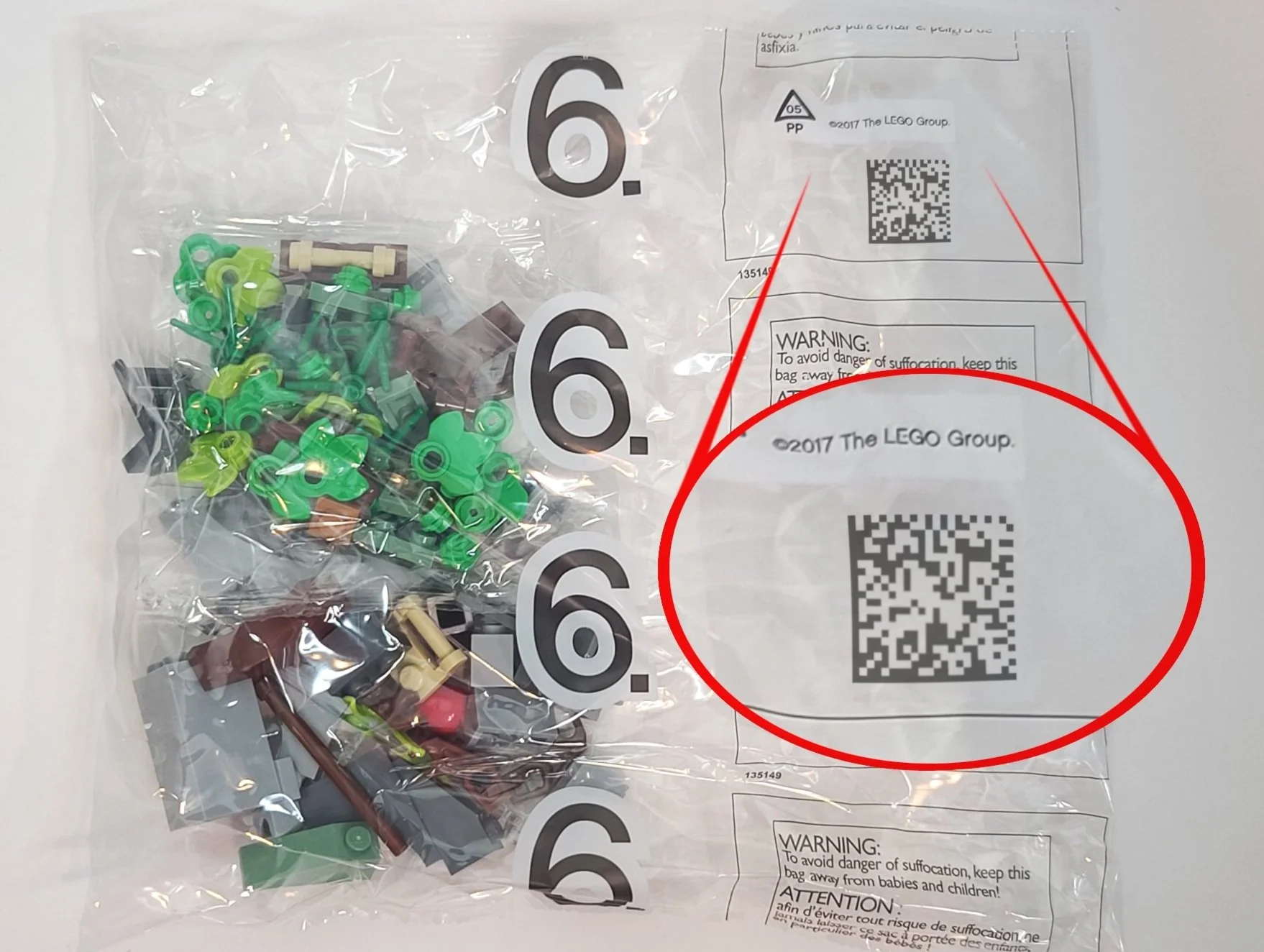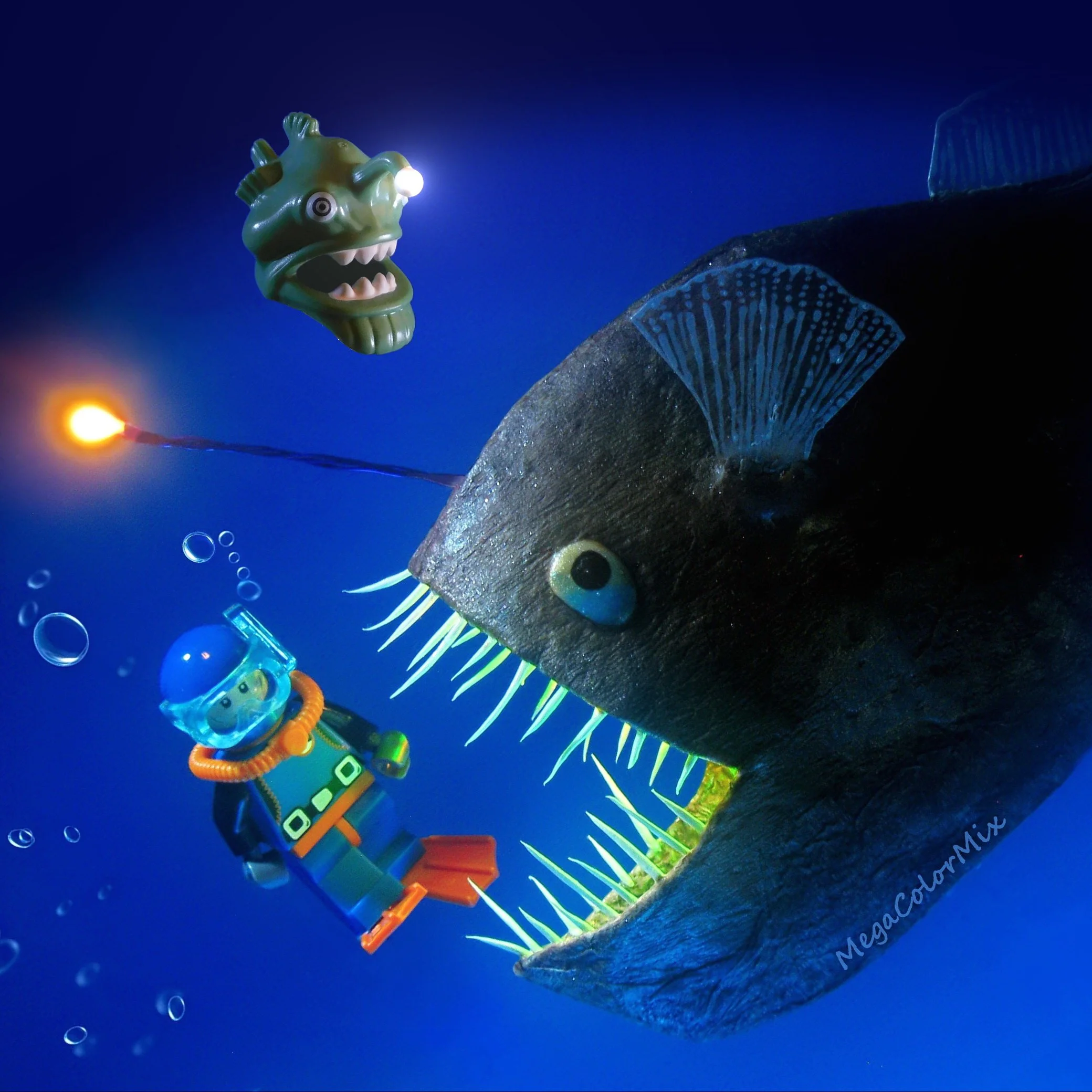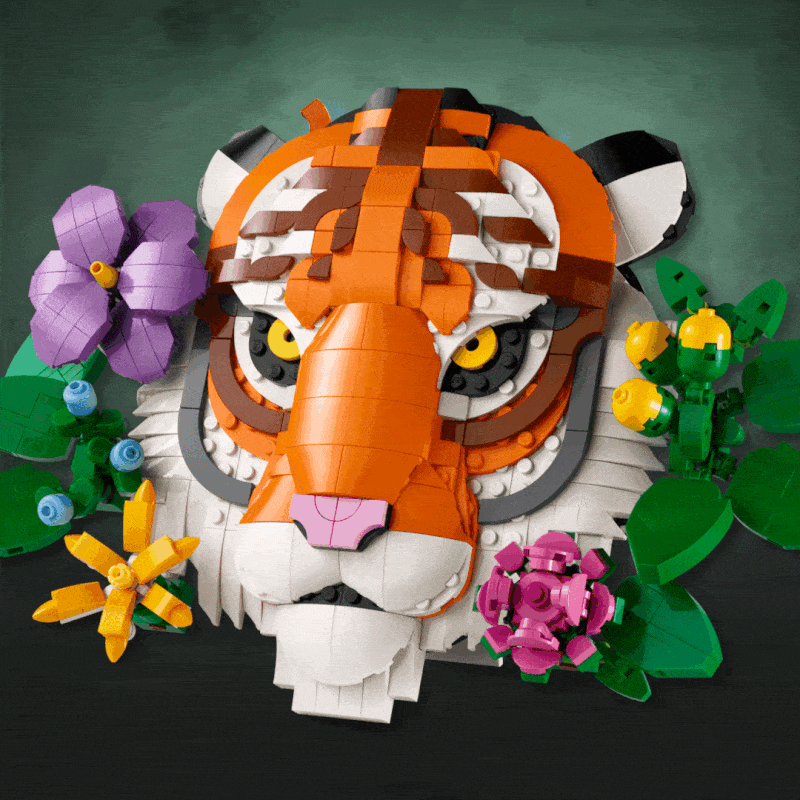LEGO Expiration Dates Revealed
/We’re all accustomed to seeing “best by” and “use by” dates on cartons of milk at the grocery store. A few of us may have even resorted to grabbing a carton from the back of the display to get an extra day of shelf life. So it came as a bit of a shock when after a bit of investigation by BrickNerd, we’ve uncovered that LEGO has secretly been adding expiration dates to their products for the past year.
In Plain Sight
The expiration dates are hidden within data matrix codes printed on the outsides of some boxes as well as embedded on some clear bags from inside specific sets as shown in the photos below. When scanned with a reader embedded in most smartphone cameras, a six-digit code will pop up correlating to the month and year that the set will “expire.”
76205 Marvel Doctor Strange Gargantos Showdown set purchased in February 2022
We were curious how long these codes have been on sets and went to a LEGO store to verify. Out of the 49 products we looked at, a total of 28 of them had visible expiration codes printed on the outside. This either means that the codes are either in a trial run or in the middle of a phased rollout.
Smaller to medium sets typically have the expiration codes printed on a side of the box near the barcode. We noticed that bigger LEGO sets more often had the code printed on individual bags rather than the outside of the box, though these codes look more like traditional QR codes but still reveal the six-digit date.
We had erroneously thought the codes were part of some kind of internal inventory system until we scanned many of them and found that most of the smaller sets show an expiration in 2-3 years’ time and the larger sets show an expiration in 4-5 years on average.
“Best Built By”
But why would LEGO implement such a change? Shouldn’t LEGO sets have an infinite shelf life? And how will this change affect the building and collecting communities? BrickNerd was able to pose a few questions to Björk Schoenwald, Co-Director of Perceptive Quality for LEGO.
Björk Schoenwald, LEGO Co-Director of Perceptive Quality
BrickNerd: Thanks for chatting with us about these mystery codes. Can you tell us a bit more about the new expiration dates on LEGO sets?
Schoenwald: LEGO is all about providing the best building experience for consumers of all ages. We look at the embedded codes as “best built by” dates which is just another step in the rigorous quality standards employed by The LEGO Group.
BrickNerd: We all appreciate the dedication to quality. What does “best built by” actually mean and why the secretive rollout?
Schoenwald: The dates provide a finite timeframe where LEGO can guarantee the quality of the product. Before the “best built by” dates (which we refer to as B3 dates), we can guarantee there will be no cracked or brittle pieces, no yellowing of bricks, no cracking or peeling of stickers, and no loss of clutch power. In the unlikely event of a missing element or a quality issue within the B3 timeframe, we will correct those issues and provide free replacements
Obviously, the products are expected to last far beyond this date, but we believe that there needs to be a cap on the duration of our corporate responsibility in order to better serve the needs of our current generation of customers and products. Eventually the date will be printed on the box underneath the data matrix code, but this was considered a soft launch before all the codes were in place. It takes a lot of effort to adjust our production facilities and designs to accommodate for changes like this, but each LEGO product should have B3 dates on them by the end of 2023.
Bags from set 80024 Monkie Kid Fire Fruit Mountain
BrickNerd: It has been an unspoken benefit until now that LEGO customer service can take care of issues for any set, no matter how old, if possible. How did LEGO decide that this time period should only last a few years depending on the set?
Schoenwald: It is about practicality at its core. LEGO warehouses are only so big and can store only so many parts at a time. In practice, nothing will change to the perceived quality. If we have your missing minifigure head, we’ll replace it. But now we have a clear date indicated on the product when our obligations for exact replacements end. Of course we will do our best to provide near-replacements after the B3 date passes but we also see BrickLink as an extension of that customer service capability, offering a chance for our customers to purchase replacements parts if we don’t have them available anymore.
Additionally, based on our builder engagement and reseller research, we found that smaller sets usually end up at their “final destinations” within two years and bigger sets move around a bit and take a little longer to settle around the four-year mark. Our “best built by” dates encompass those realities and also greatly exceed most other companies’ typical one-year warranties.
BrickNerd: Does naming the expiration date as “best built by” indicate that LEGO prefers that sets are actually built rather than collected in boxes?
Schoenwald: We know that many fans are collectors more than builders. When exclusive products are released, we recognize that many will sadly never be opened. But LEGO is not just a box printing company. LEGO sets are meant to be built. AFOLs who only collect sealed boxes and never open them might as well print out the box art to save time and money. We hope that the “best built by” dates will encourage fans to build more rather than just admire the packaging.
BrickNerd: We have more questions but recognize that our allotted time has expired. Thank you for the insights!
A sampling of LEGO expiration dates taken from a LEGOLAND Discovery Center store in February 2022.
Expired Thoughts
Taking a critical look and from a practical viewpoint, we can understand the necessity of LEGO expiration dates. For example, if someone keeps a Lord of the Rings set sealed for 20 to 30 years and eventually opens it and discovers an exclusive minifigure torso is missing, is it reasonable for LEGO to still stock replacements? Probably not. But how about after 5 or 10 years? It starts to get more debatable as the timeframe shortens. While many will agree with the “best built by” date concept, I personally expect a lively debate about the eventual duration of the dates implemented by LEGO.
Internally at BrickNerd, there has been some discussion among contributors that the new expiration dates could be partially motivated by LEGO transitioning to more sustainable packaging and renewable materials. The implementation of paper bags replacing inner plastic part bags just began at the end of 2021 in the exclusive employee Christmas set and is set to roll out more widely very soon. While LEGO spent multiple years researching and testing various paper compounds, there probably isn’t long-term (10+ years) data on the degradation of this specific material. However one can easily surmise that the paper bags sitting in storage units and on shelves in AFOLs’ “to be built” piles could break down over time.
A Typical AFOL’s “to be built” (or parted out) pile.
Does this mean an end to collectors buying sets and keeping them mint in sealed boxes (MISB)? Certainly not! AFOLs are gonna AFOL. But so many questions remain unanswered. Will sets that have “expired” be worth more or less on the secondary market? Will paper bags and biodegradable plastic start decomposing when left unbuilt over the years? Will AFOLs now look for the latest expiring set from later production runs at the store to get the longest guaranteed freshness like a carton of milk? Will this move encourage collectors to build more? Is this move actually LEGO trying to solve a problem or is it more about protecting themselves from liability?
We will see how this expiration issue evolves and continue to bring you the best information possible. But in the meantime, scan the LEGO sets and bags in your collection to see what expiration dates may already be ticking.
Zoomed and enhanced for better scanability.
What do you think will be the impact of LEGO expiration dates on the fan community? How long did it take you to figure out this was an April Fools article? Leave your thoughts in the comments below.
Do you want to help BrickNerd continue publishing articles like this one? Become a top patron like Charlie Stephens, Marc & Liz Puleo, Paige Mueller, Rob Klingberg from Brickstuff, John & Joshua Hanlon from Beyond the Brick, Megan Lum, and Andy Price to show your support, get early access, exclusive swag and more.






